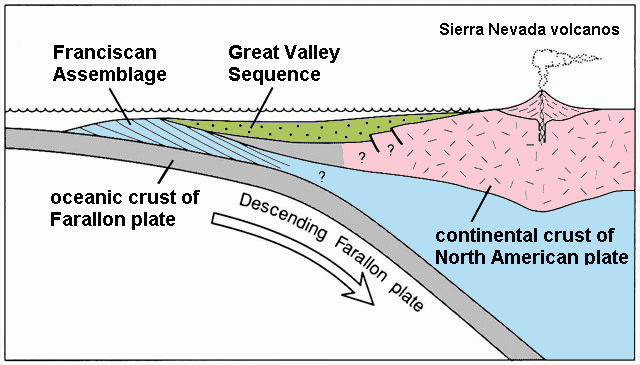CPT Q. 040: How can plesiosaur fossils be in the Franciscan Formation if the rock was deeply subducted?

Q. 40. You have repeatedly referred to the Franciscan formation as good evidence of rapid subduction and exhumation. The UHP rocks within that formation are a classic example that would appear to support what you are saying. However, amongst these rocks are unmetamorphosed rocks, and even ichthyosaur and plesiosaur fossils - which should have been metamorphosed/destroyed by the rapid subduction, heating and exhumation you are suggesting. How do you propose to preserve fossils and unmetamorphosed rocks during such subduction and exhumation events?
Response: The obvious answer is that not all the sediments that comprise the Franciscan formation were subducted, metamorphosed and exhumed. Let me reproduce the Wikipedia description given for the Franciscan Assemblage:
The Franciscan Assemblage is a geological term for an accreted terrane of heterogeneous rocks found on and near the San Francisco Peninsula. It was named by geologist Andrew Lawson who also named the San Andreas Fault which bounds the Franciscan Assemblage. Also known as the “Franciscan Formation,” “Franciscan Series,” “Franciscan Group,” “Franciscan assemblage,” or “Franciscan Complex,” it includes altered mafic volcanic rocks (greenstones), deep-sea radiolarian cherts, greywacke sandstones, limestones, serpentinites, shales, and high-pressure metamorphic rocks, all of them faulted and mixed in a seemingly chaotic manner. It forms the major component of the Pacific Coast Ranges of California. Wentworth and others interpreted the juxtaposition of the Franciscan Assemblage and the section consisting of the Coast Range ophiolite and the Great Valley sequence to have happened through landward movement of the Franciscan Assemblage as a tectonic wedge.
The geological setting, as I have noted earlier, was the trench resulting from the subduction of the Farallon Plate off the section of the North American coast which is now California. The high-pressure metamorphic rocks visible today in this highly contorted assemblage represent only the small fraction of the wedge material exhumed out of the relatively larger fraction which was dragged into the mantle by the subducting Farallon Plate. Moreover, it is also clear that a significant fraction of the wedge rocks present today in the Franciscan Assemblage were not among those subducted, metamorphosed, and exhumed. The types of rocks in this assemblage indicate this subduction zone was receiving a high input of eroded sediment from the continent. For ichthyosaurs and plesiosaurs to be buried and preserved as fossils in this dynamic setting is not surprising.